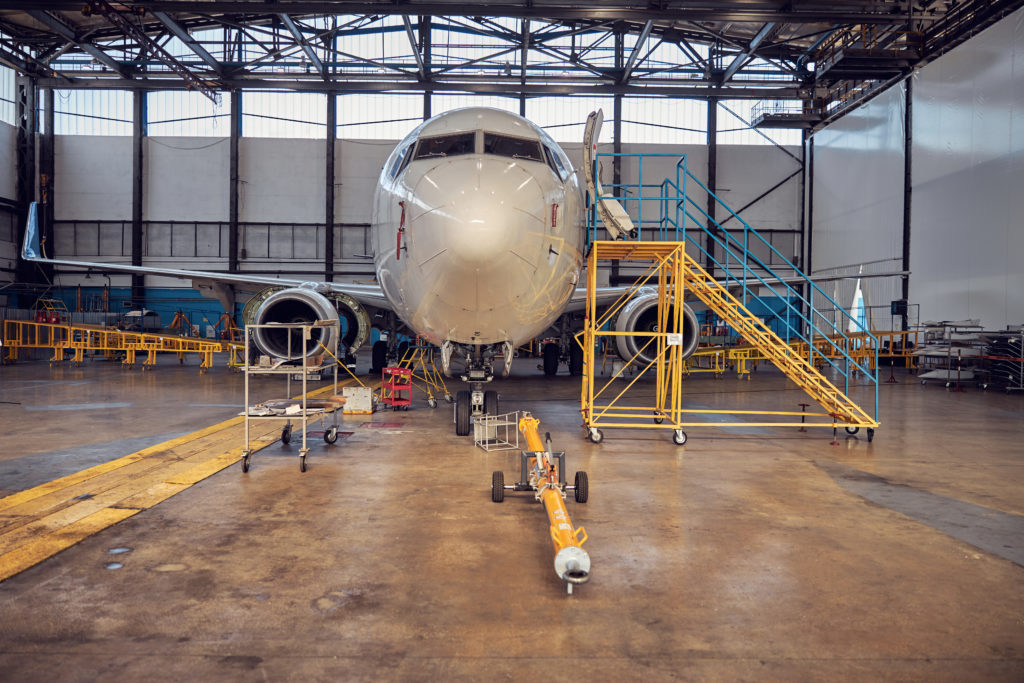For the aviation industry, every detail matters when you have to meet strict requirements—especially aircraft data plates. These essential components carry important information about the aircraft, and ensuring they meet FAA requirements is critical for safety and compliance.
In this blog, we’ll explore how selecting the right materials for aircraft data plates guarantees FAA approval and enhances durability and long-term performance in demanding aviation environments. But first, let’s go over the basic components and requirements for aircraft data plates.
Without further ado, let’s dive right in!
What Are Aircraft Data Plates?
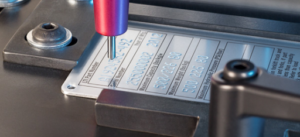
Aircraft data plates are vital identification tags affixed to various parts of an aircraft. Moreover, these plates are not just informative—they’re mandatory for compliance and safety in aviation.
Found on everything from engines and propellers to the fuselage, data plates allow technicians and inspectors to quickly access critical details about an aircraft’s components. This ensures that each part meets the necessary standards for operation.
FAA Regulatory Requirements for Aircraft Data Plates
The Federal Aviation Administration (FAA) sets strict regulations to help ensure the airworthiness of all aircraft operating in U.S. airspace. One of their key requirements is the proper labeling and identification of aircraft components through data plates.
Furthermore, these plates must adhere to specific guidelines regarding the information displayed, durability, and placement. This is to guarantee accurate identification and compliance throughout the aircraft’s lifecycle.
The aircraft data plates must contain the following essential information:
- The manufacturer’s name
- Aircraft model number
- Serial number
- Type certificate number (if applicable)
- Aircraft engine rating (if applicable)
- Production certificate number (if applicable)
- And other key specifications required by regulatory bodies like the FAA
Durable and long-lasting, aircraft data plates are designed to withstand harsh environmental conditions. Whether it be wind, rain, or extreme temperatures, the choice of material for the plate is key for long-term reliability.
Fireproof Identification Plates
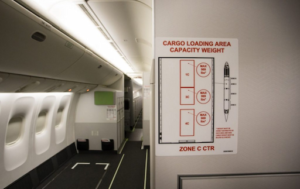
Also, it is important to note that aircraft data plates must be fireproof. Nameplate manufacturers use materials like metalphoto and stainless steel to guarantee that the plates will remain intact and legible during accidents, fires, and other emergencies. This fireproof marking helps ensure safety, maintain compliance, and allow easy identification of aircraft parts in various scenarios.
Additionally, the plates must be secured in such a way that they won’t be defaced or removed during normal operations. It should be securely attached to the exterior of the fuselage in a location that is clearly visible from the ground. Moreover, it must be placed either near and behind the rear entrance door or on the fuselage close to the tail section.
Other Safety Considerations
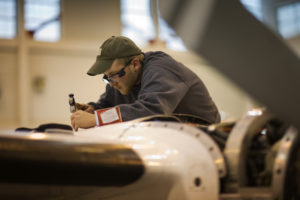
In aviation, safety is paramount, and aircraft data plates play a crucial role in maintaining it. These plates provide essential information for technicians, inspectors, and operators. Durable and compliant data plates help prevent errors during inspections and repairs, contributing to the overall safety and reliability of the aircraft.
When a plate is damaged, stolen, or worn, it should be promptly replaced by the original manufacturer if possible. Failure to do so can lead to the aircraft being deemed ineligible for a standard airworthiness certificate.
The Best Materials for Aircraft Identification Plates
Since aircraft are often exposed to extreme environmental conditions, the nameplate material must be resistant to abrasion and corrosion. For this reason, selecting the appropriate nameplate material is very important. Hiring an experienced nameplate manufacturer will help you decide which material is best for your application.
1.) Aluminum
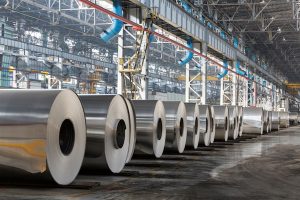
Generally, aluminum is a popular choice for aircraft data plates due to its lightweight and durable properties, making it ideal for use in aviation. Moreover, aluminum nameplates offer excellent resistance to corrosion and environmental conditions, which is essential in the harsh, high-altitude environments that aircraft encounter.
The material also allows for easy fabrication and anodizing, which enhances its durability and legibility. Therefore, this makes aluminum a reliable option for marking vital information on aircraft components while adhering to strict FAA regulations.
Aluminum Alloys
To dig a little deeper, aluminum alloys offer versatility in aviation due to their different series, each designed for specific uses. The 1000 series, with the highest aluminum content, provides excellent corrosion resistance.
Meanwhile, the 2000 series, which includes copper, was originally designed for aerospace, though it has been largely replaced by the stronger 7000 series. Alloys like 3003 and 6061 are popular choices for nameplates, offering a balance between strength and corrosion resistance. This makes them ideal for aircraft data plates that need to withstand demanding environments.
2.) Metalphoto®
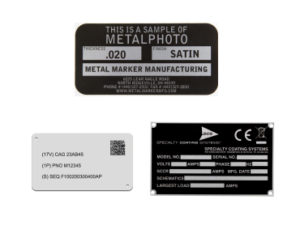
Next, Metalphoto® nameplates are a high-performance solution commonly used in aerospace applications due to their superior durability and clarity. Made from anodized aluminum with a photographic image embedded below the surface, these plates are highly resistant to chemicals, UV exposure, and abrasion.
Metalphoto nameplates are ideal for environments where data must remain legible under extreme conditions. Their readability upholds over time, making them perfect for long-term use in aerospace.
3.) Stainless Steel
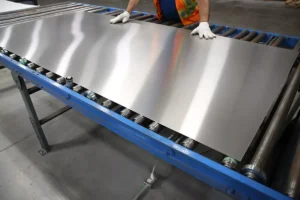
Finally, stainless steel nameplates provide the ultimate strength and durability for aviation and aerospace applications. Known for their ability to withstand extreme temperatures, chemicals, and harsh environments, stainless steel plates are ideal for critical components that require the highest level of resilience.
In addition to their durability, stainless steel nameplates can be etched with highly detailed information, ensuring the data remains legible even after years of exposure to tough conditions. This makes stainless steel an excellent choice for long-term performance and compliance with FAA safety standards.
Trust Hallmark Nameplate To Exceed Your Standards
As you can see, choosing the right material for aircraft data plates is crucial to meeting FAA requirements. Durability and long-term performance in demanding environments are the bare minimum for this industry. Whether you opt for aluminum, Metalphoto®, or stainless steel, each offers unique benefits tailored to specific aerospace needs.
At Hallmark Nameplate, we specialize in producing high-quality, compliant data plates that withstand the test of time. Our expertise and material options ensure that your aircraft’s vital information remains secure and legible.
So, why just meet the standards when you can exceed them?
Visit our website today for a FREE quote and explore the best solutions for your nameplate needs!

